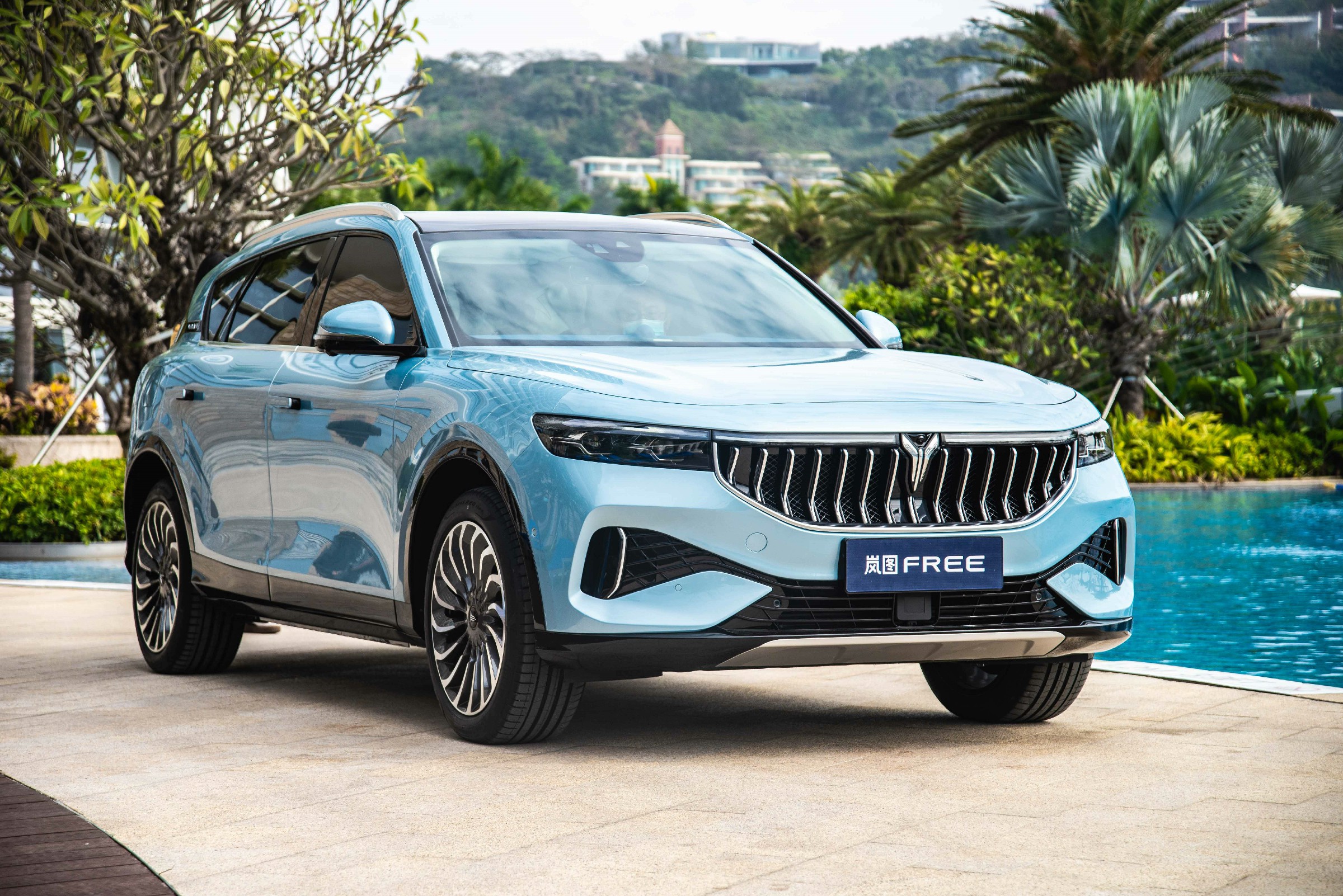On July 29, 2020, Voyah, a high-end intelligent electric car brand under Dongfeng Group, was officially unveiled in Wuhan. At the press conference, Voyah set the “FLAG” of “launching at least one new car to the market every year.”
What I did not expect is that this “FLAG” came into effect this year. On the evening of December 18, 2020, Voyah held a new car launch conference in Shenzhen, and their first mass-produced car, Voyah FREE, was officially released. This was less than half a year after the Voyah brand came to the public’s attention.
Central Enterprise & Power
Voyah is a relatively new brand, so before we talk about the car, it is necessary to introduce it briefly. Voyah was established in 2018 and belongs to Dongfeng Motor Corporation. Before its official debut, it was codenamed “H” within Dongfeng Group and positioned as a high-end car brand.
The chairman of Voyah is also the chairman of Dongfeng Motor Corporation, Zhuyanfeng, and Lu Fang is the CEO and CTO of Voyah. Voyah is a central enterprise with 100% shareholding held by the State-owned Assets Supervision and Administration Commission (SASAC) of the State Council. In previous media events, Voyah proudly declared itself as the first high-end electric vehicle brand owned by a central enterprise. Compared to other emerging car companies, this identity makes Voyah a very special existence.
Backed by Dongfeng Group, Voyah has abundant technical and supply chain resources. With these advantages, Voyah’s first car landed much faster than most people expected. However, with the label of a central enterprise, I am curious about Voyah’s new car, and with the combination of a central enterprise and a new car company, who is the main subject?
Slightly Reserved First Impression
As Voyah’s first car, the exterior of Voyah FREE was already revealed before the press conference. Compared with the concept car, the appearance of Voyah FREE is much more restrained, and only a little of the concept car’s feeling is retained in the overall contour. Other design details have been significantly modified.
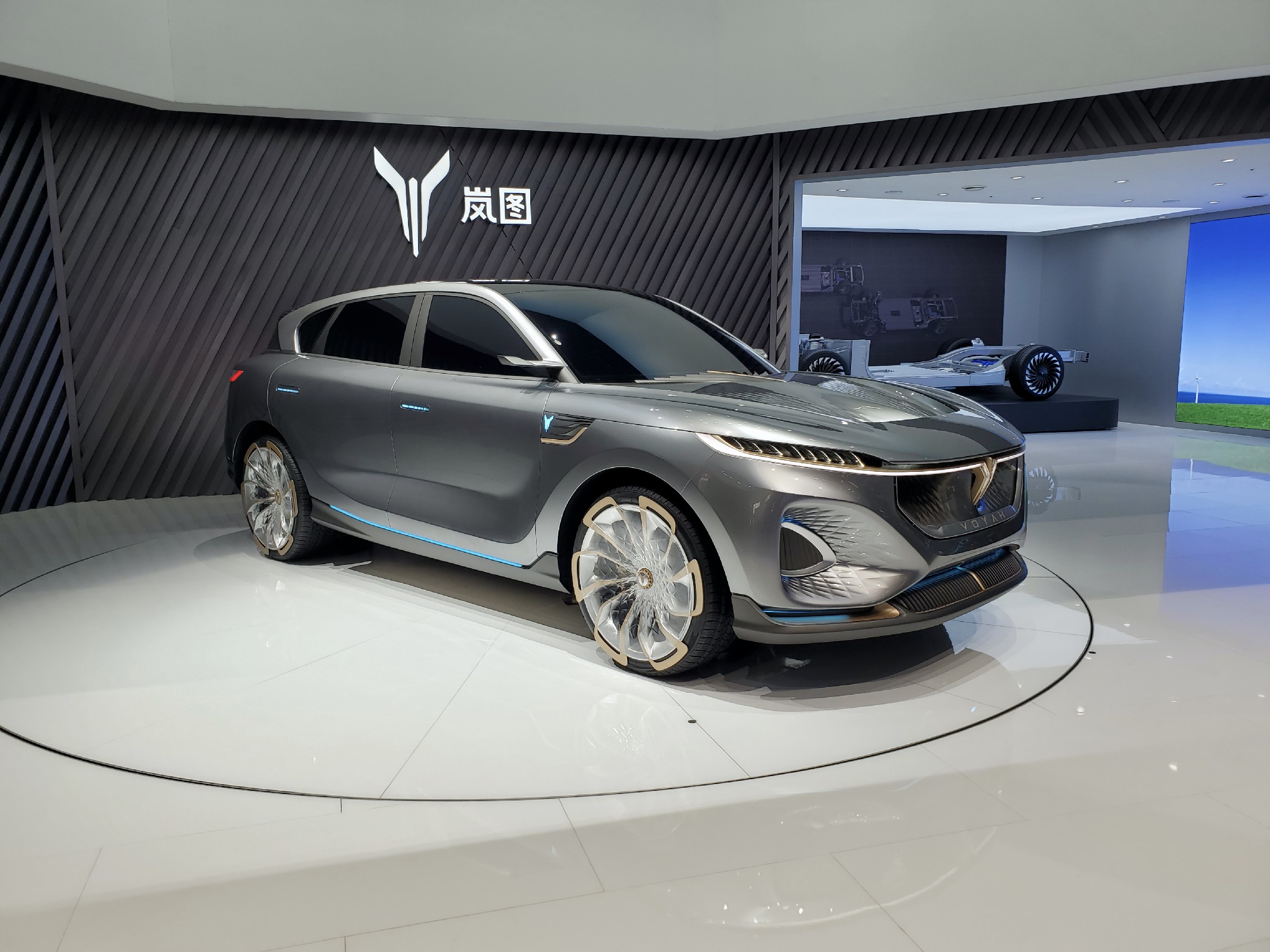
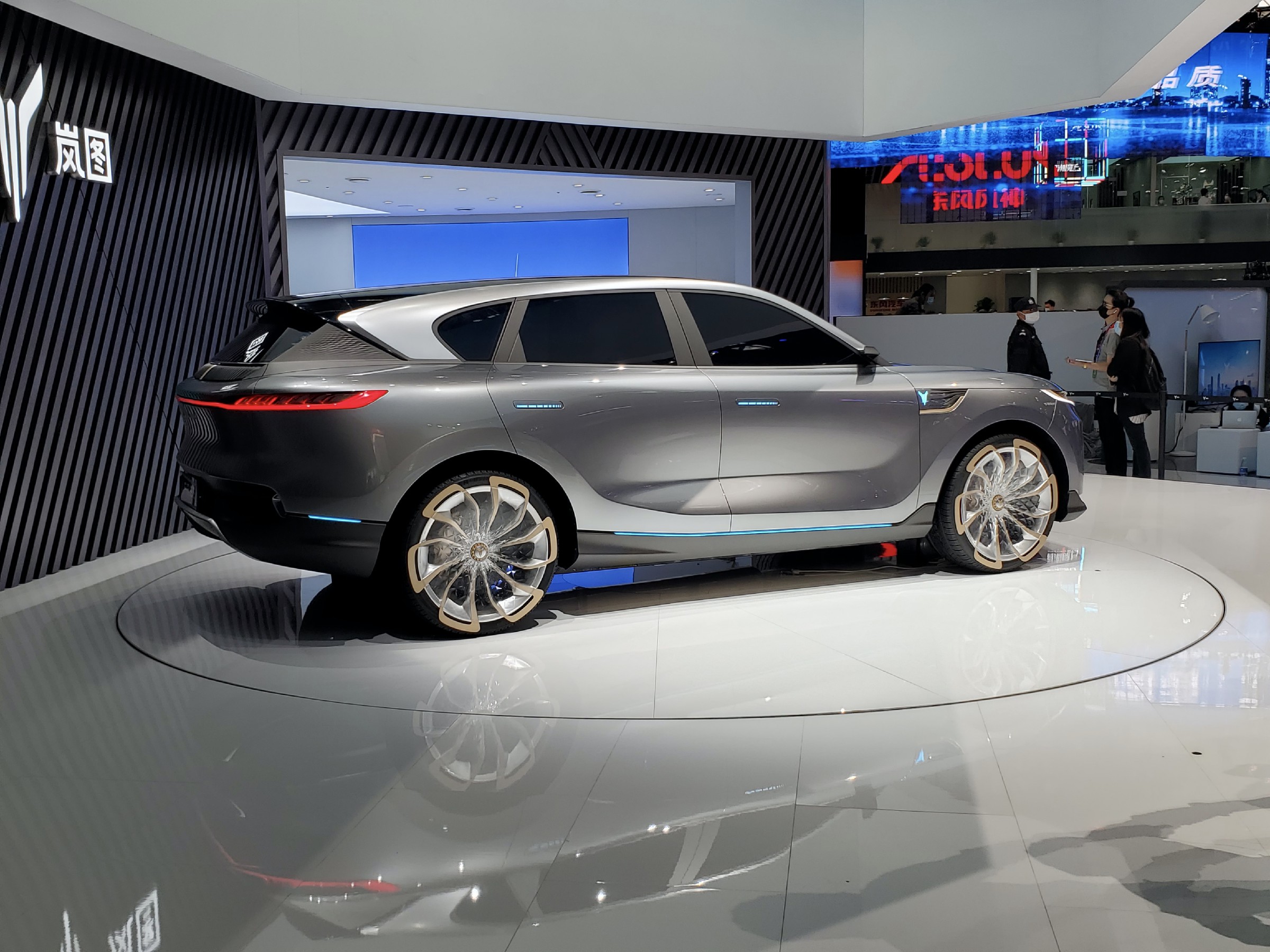
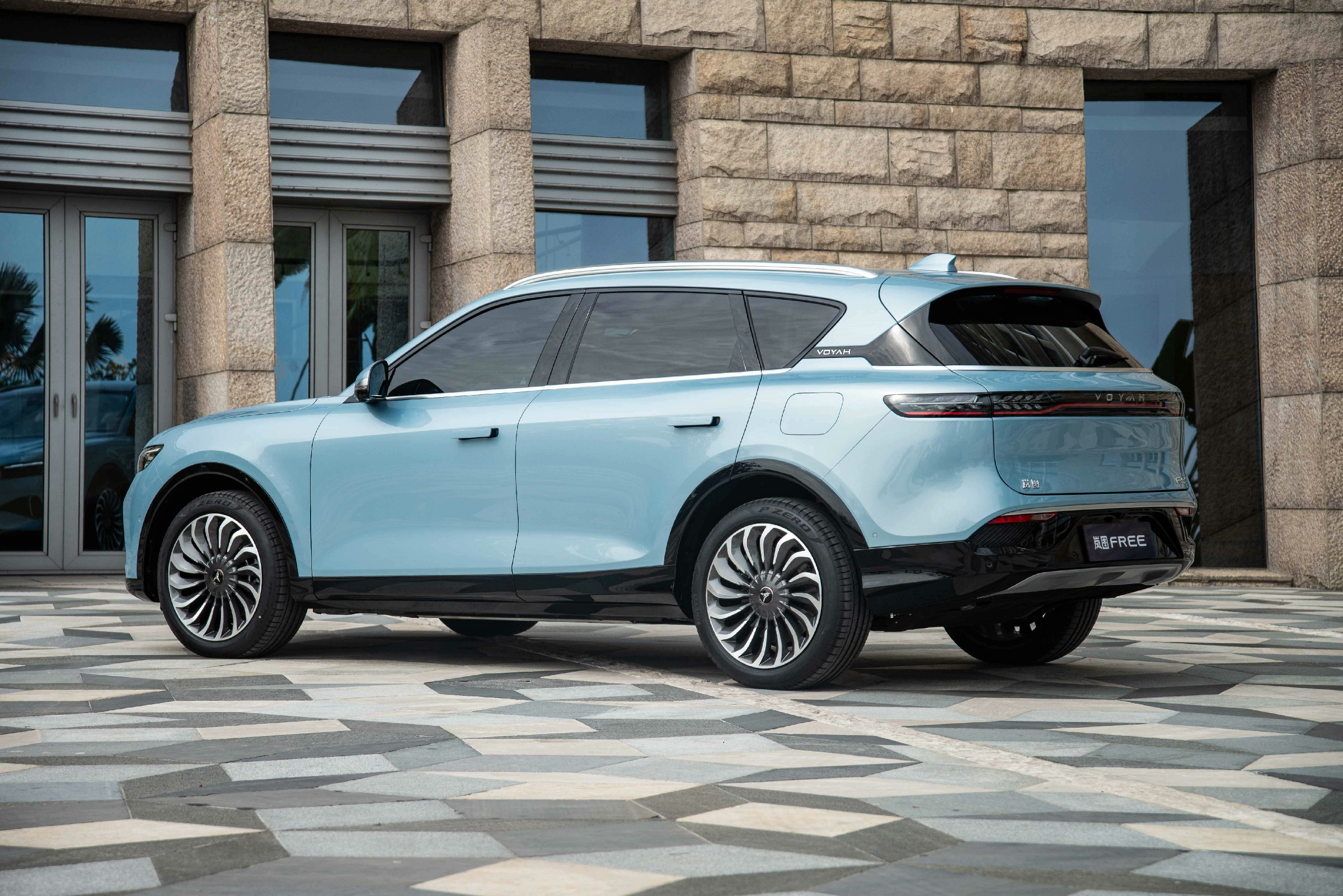
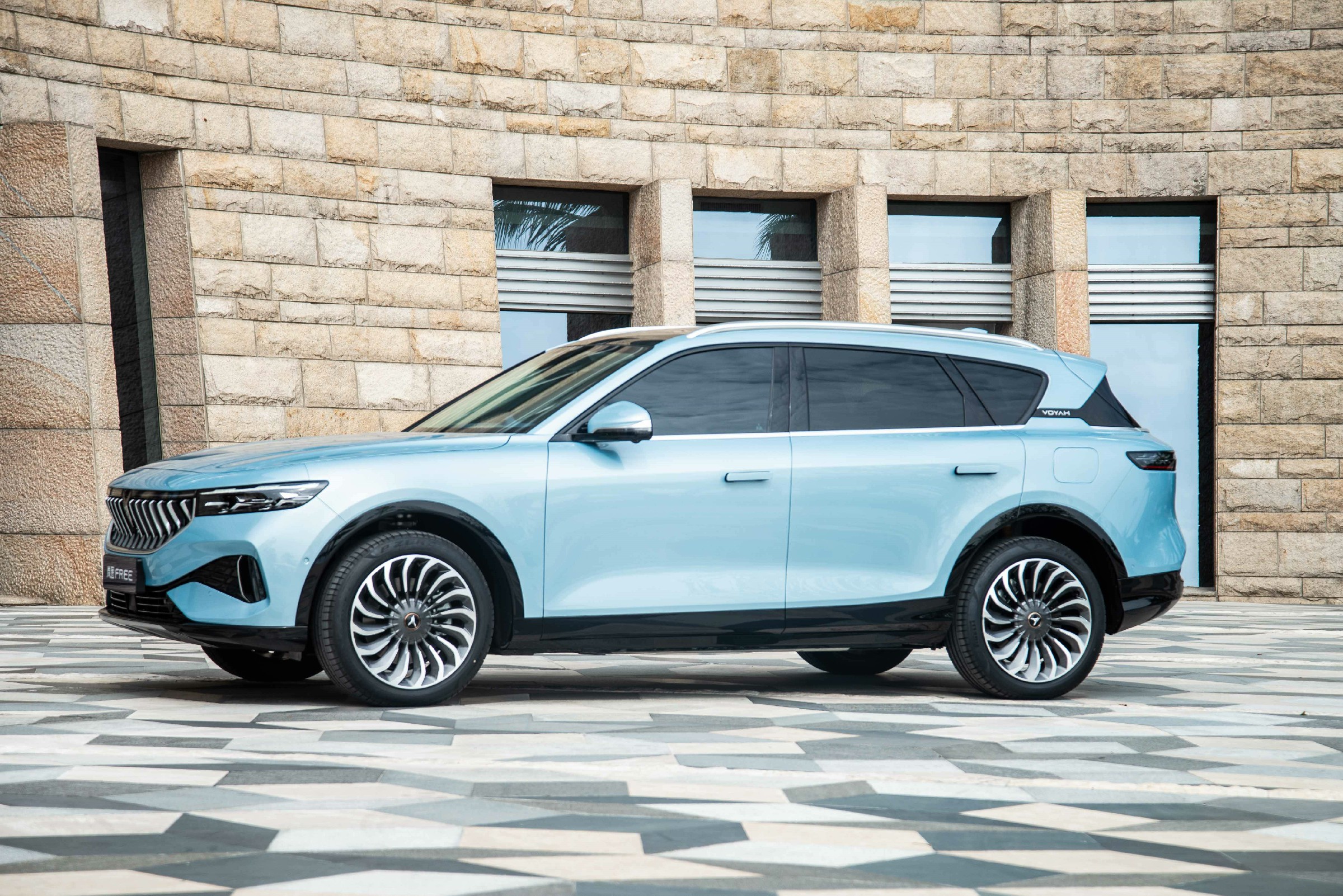 As a plug-in hybrid car, the Voyah FREE still retains the intake grille. The combination of multi-blade fan hubs and high-light chrome trims gives it less of an “electric car” feel and more of a luxury fuel-powered car as I know it.
As a plug-in hybrid car, the Voyah FREE still retains the intake grille. The combination of multi-blade fan hubs and high-light chrome trims gives it less of an “electric car” feel and more of a luxury fuel-powered car as I know it.
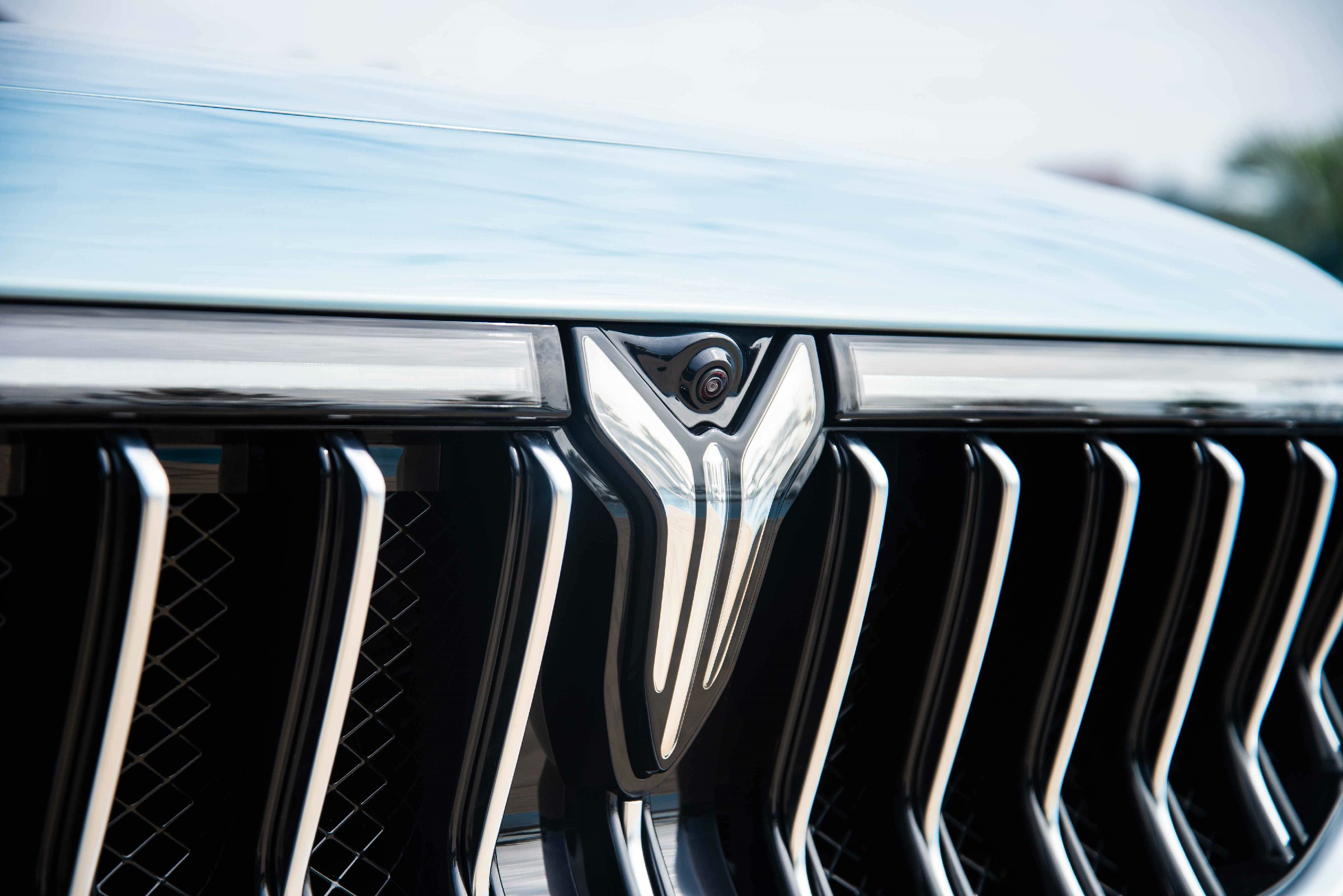
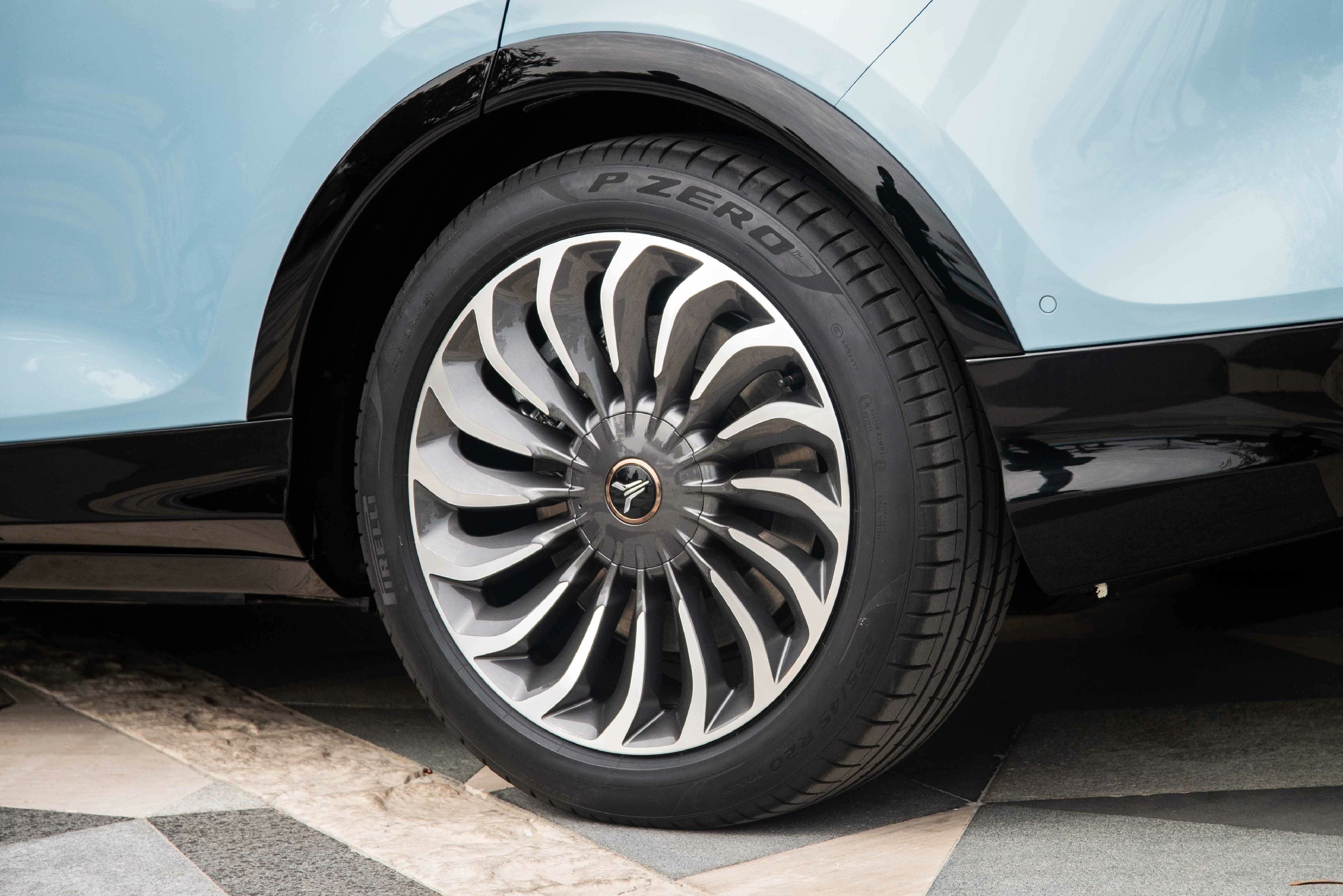
The Voyah FREE exhibition car is coated with a light metallic blue. Under the sunlight, it looks good, and the light blue tone, along with bright metal LOGOs, transparent taillight covers, and other bright and transparent details, make this slightly restrained car look less oily.
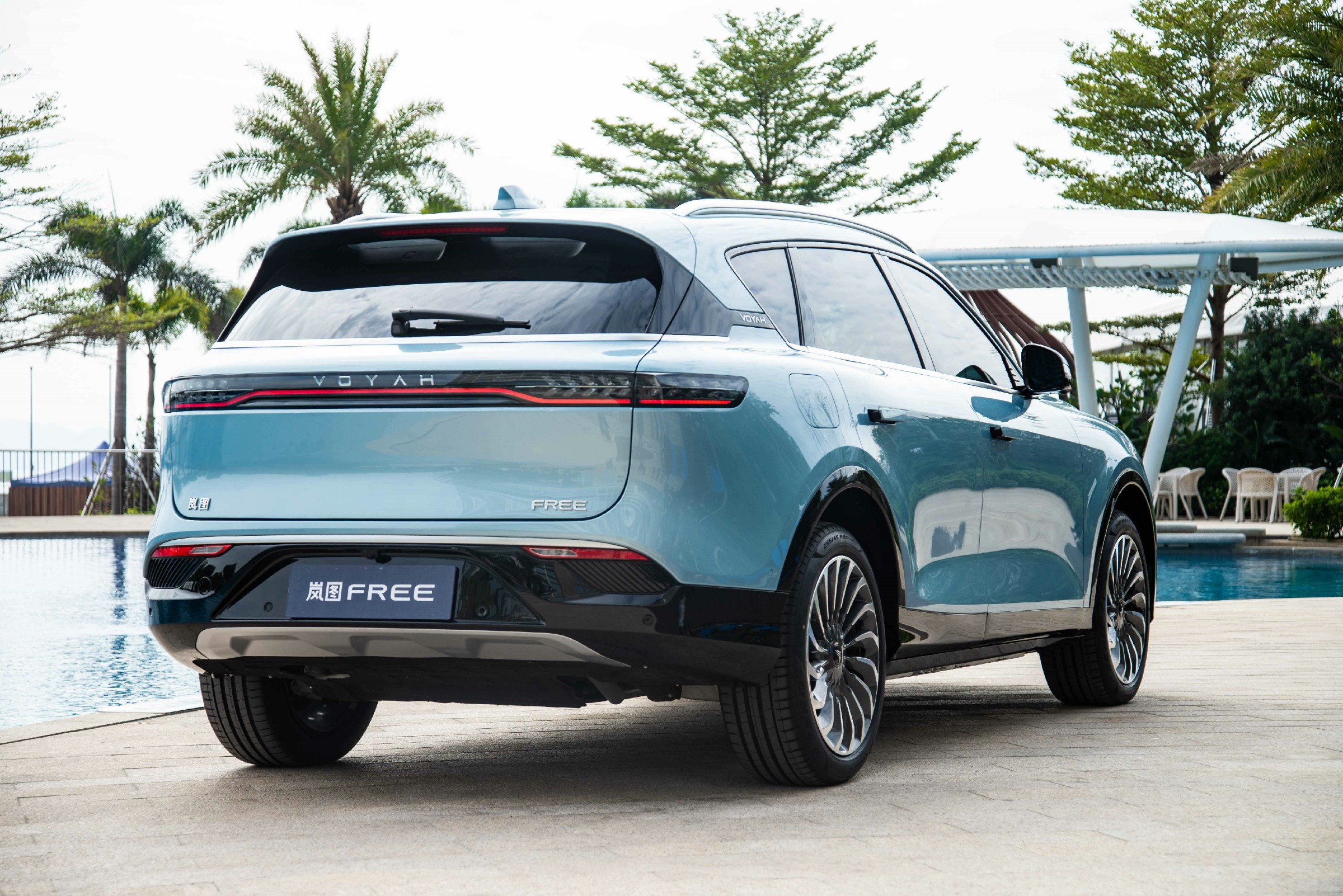
The positioning of Voyah itself is a high-end intelligent electric car brand, and using a midsize SUV as its starting point is also consistent with this positioning. However, in this era where everyone claims to be high-end, most consumers have immunity to “high-end.” Whether it is high-end or not, it still depends on the car.
Experience the Rear Space
Size is the critical reference for a car’s positioning. The Voyah FREE has dimensions of 4905 * 1950 * 1690 mm, with a wheelbase of 2955 mm, which is undoubtedly a midsize SUV. However, despite being over 4.9 meters in length, the Voyah FREE does not look very “midsize” visually, and the overall body posture does not seem very bulky or cumbersome.
But with a wheelbase of 2955mm there, the car is not just visually small. It’s needless to say more about the front row. The rear space of the 5-seat Voyah FREE is quite generous. As a person who is 180cm tall, I feel no pressure on my legs or head in the back seat, and I can even cross my legs quite comfortably.
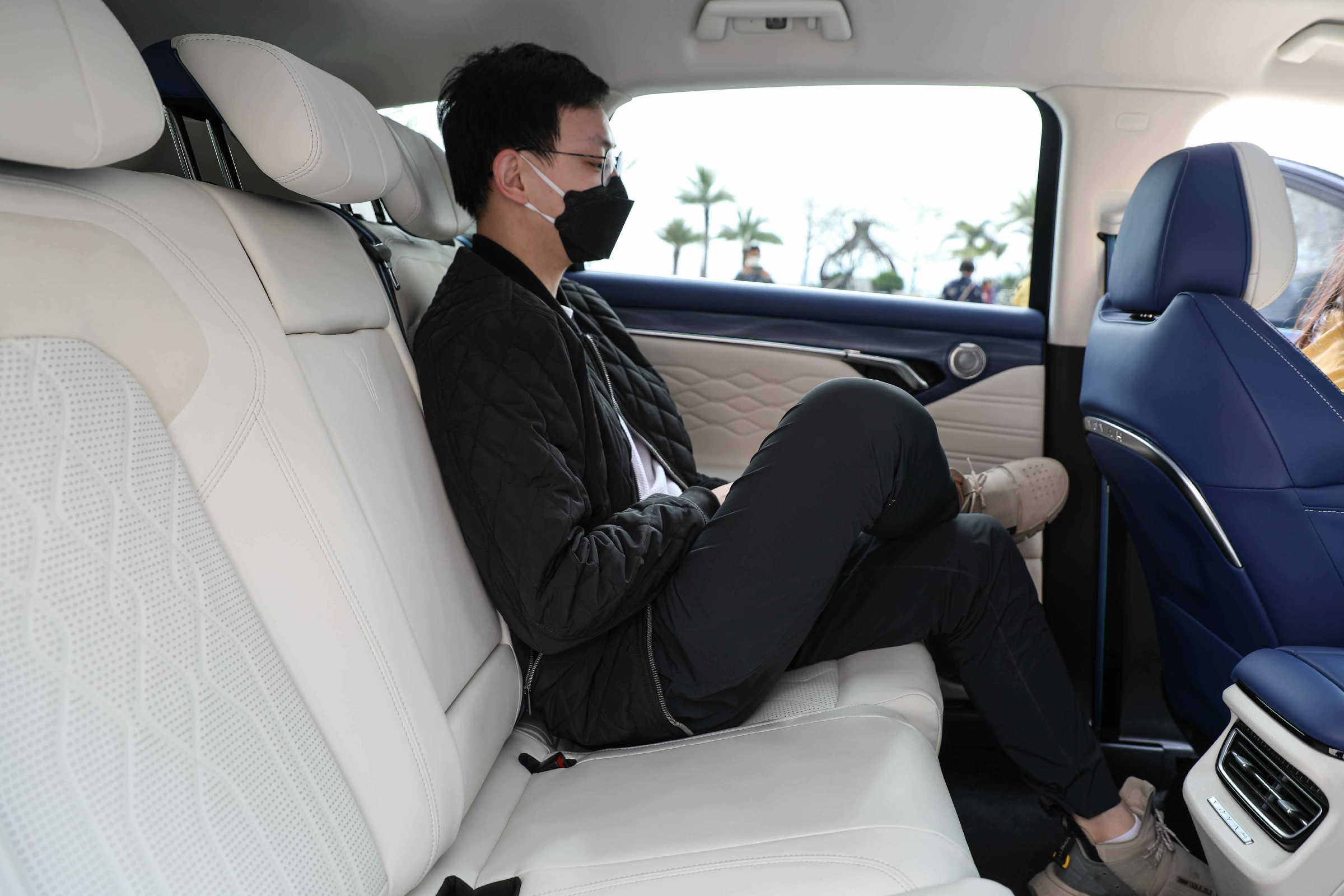
Moreover, the large rear space of the Voyah FREE is not the kind that some brands take shortcuts and shorten the length of the seat cushion to make it “look larger.” The rear seat cushion of the Voyah Free is not only high but also long, and the support is very sufficient. In addition, the rear floor of the Voyah is flat, and the utilization rate of the rear space is undoubtedly good. Speaking purely of the rear seats, the Voyah FREE with two rows of seats provides a better experience than the ES8 and Li-Xiang ONE with three rows of seats. With this size and rear space, the Voyah FREE already has a high-end feeling.
Configuration Suitable for IdentityThe configuration part of the Voyah FREE is a longboard. As mentioned earlier, the front row of the Voyah uses 12-way electric seats that are ventilated, heated, and even have a rare massage function at this level. Looking back at the information on the configuration page PPT of the Voyah FREE released last night, it was filled with several slides.
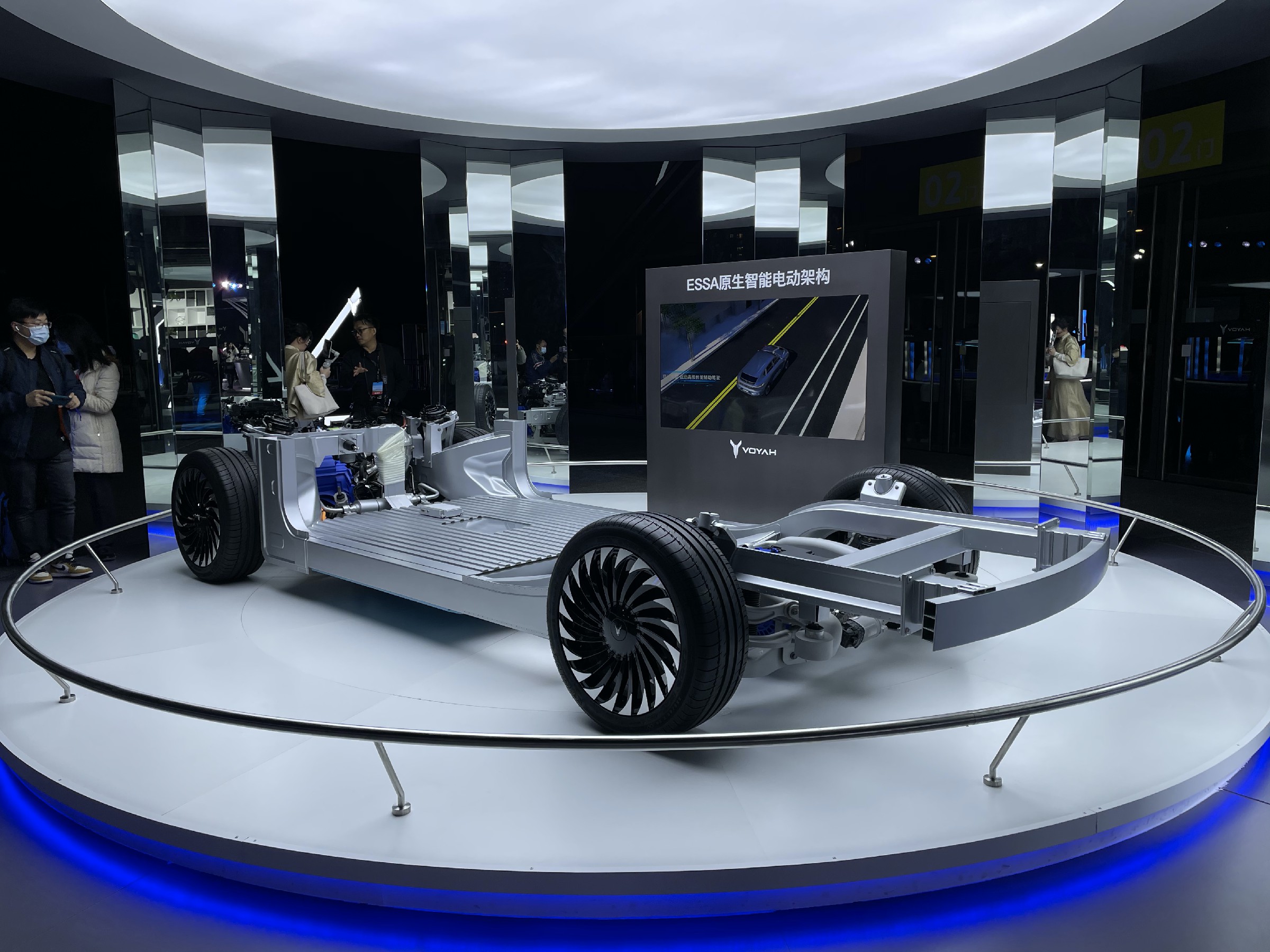
First of all, the Voyah FREE uses a pure electric platform for the chassis, with both front and rear subframes made of full-aluminum alloy structure. For the suspension part, the Voyah FREE adopts a front double-wishbone and rear multi-link form, and is equipped with air suspension on this basis.
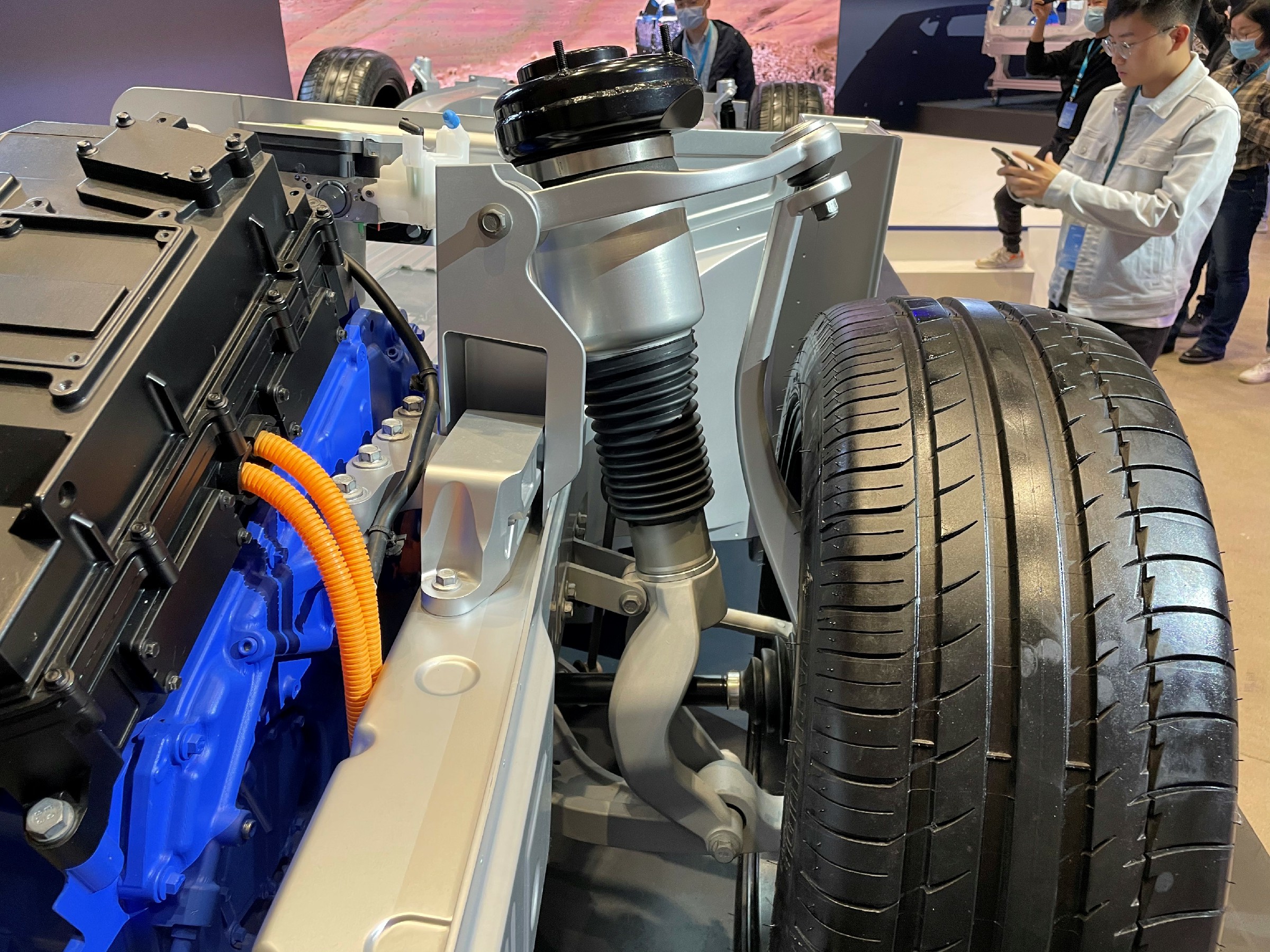
Speaking of the on-site experience, the height-adjustable range of the Voyah FREE’s air suspension is very large, and the lifting speed is relatively fast. When the body is raised to the highest position, the ground clearance is one and a half fists higher than the lowest position. The posture of the Voyah FREE between the highest and lowest is almost switched from off-road vehicle to sports SUV.
In addition, during the process of moving the car on site, I also had a simple experience of the “dynamics” of the Voyah FREE for several tens of meters. I have to say that this air suspension is very smooth and comfortable for filtering out road joints at low speeds, and it is full of advanced sense of comfort. In a future dynamic experience, I can talk more about it with everyone.
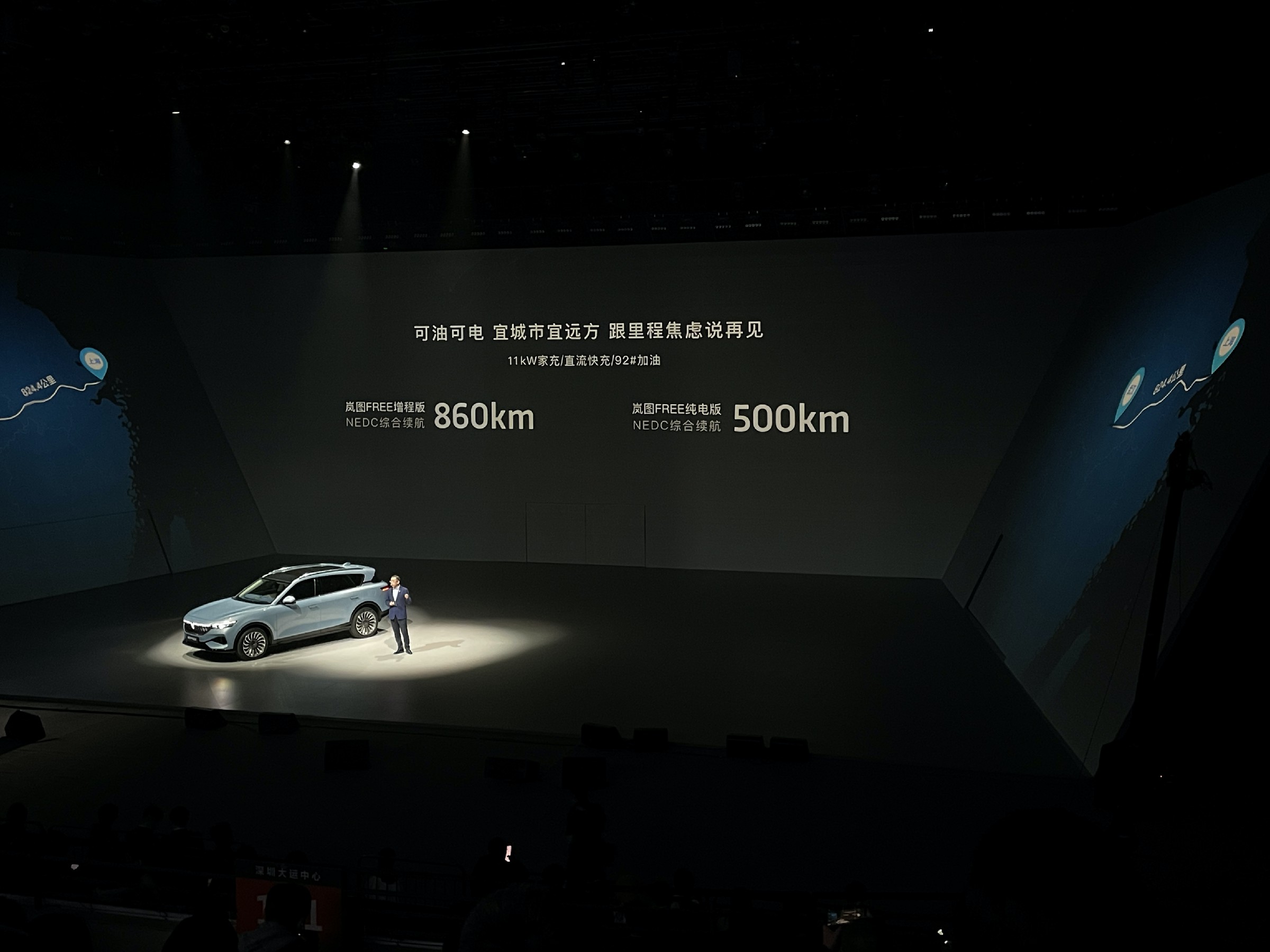
As an electric SUV, the Voyah FREE provides two power forms: pure electric and range-extending, both of which have huge power outputs of 500 kW and 1000 Nm with dual motors. The estimated NEDC range of the pure electric version is 500 km, with an acceleration of 0-100 km/h in 4.8 seconds. It is worth reminding that the pure electric version of the Voyah FREE’s range has not been tested by MIIT yet, and this data is predicted and may change in the future. The range-extending version has an NEDC range of 860 km and a 0-100 km/h acceleration of 4.6 seconds. Both power forms’ top speeds are greater than 200 km/h. Regardless of the power form, the acceleration time of under 5 seconds and the 1000 Nm torque make the power of the Voyah FREE exceed the necessary range.
How about the assisted driving?The information on the assistance system of the Voyah FREE is not very detailed at the moment. The visual hardware uses nine cameras, including a driving recorder camera, an infrared night vision camera, four 360-degree panoramic cameras, and two in-car cameras, but the forward view is still monocular. There are three millimeter-wave radars in addition to the one in front, one each for the left and right 45 degrees of the rear of the vehicle. In addition, the car also has 12 ultrasonic radars.
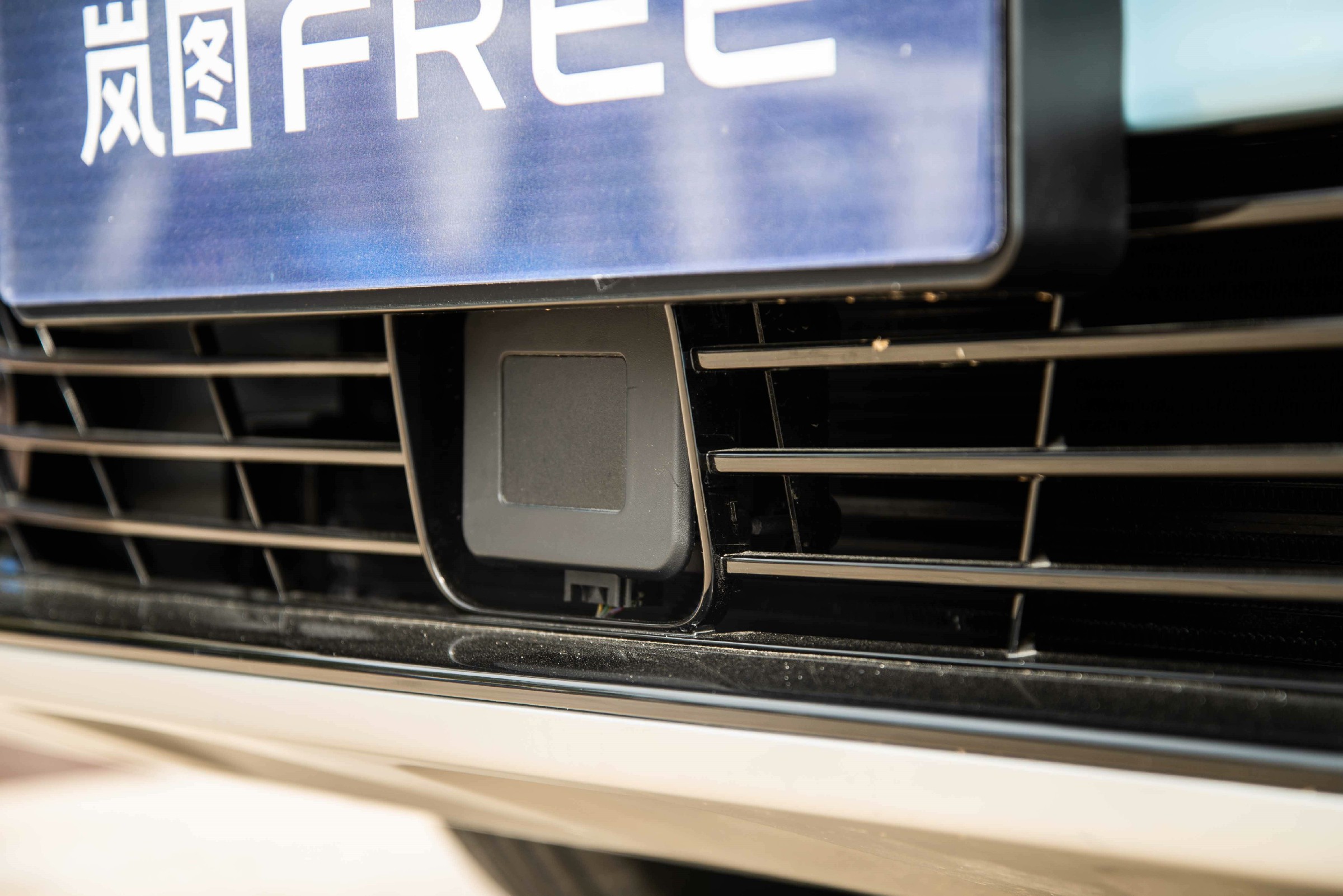
The Bosch-assisted driving solution from Voyah can achieve more than 20 functions, in addition to the conventional lane keeping, ACC, and common active safety configurations, this car also has door-opening warning, front car starting warning, and automatic parking function for side, vertical, and inclined parking. Also interesting is its sentry mode, a well-received feature on Tesla models, appearing on the Voyah FREE surprised me somewhat. This is worthy of praise, but the actual driving assistance ability of the Voyah FREE cannot be determined for now.
One thing I noticed is that Voyah rarely uses terms such as L2.5, L2.9, or L3 in its promotion. Voyah’s CEO and CTO, Lu Fang, talked about their views on this issue in an interview after the press conference: “I don’t think there is currently a car above L3 level on the market. But now everyone is excessively emphasizing L3, and these messages mislead consumers. Seeking truth from facts is our bottom line. We cannot exaggerate some technical capabilities for advertising effects. Of course, I personally believe that the technology of autonomous driving will develop rapidly, and we are also pursuing higher-level autonomous driving capabilities.”
Very formal, even a little too formal
When I arrived inside the car for the shooting, the first thing that caught my attention was the interior color scheme of the Voyah FREE. The deep blue with white interior is unique in this era of black and yellow leather interiors, and the white makes the interior bright and warm. The deep blue color contrasts with it, and the cabin is neither dull nor excessively contrasting, making it a very versatile and high-end color.
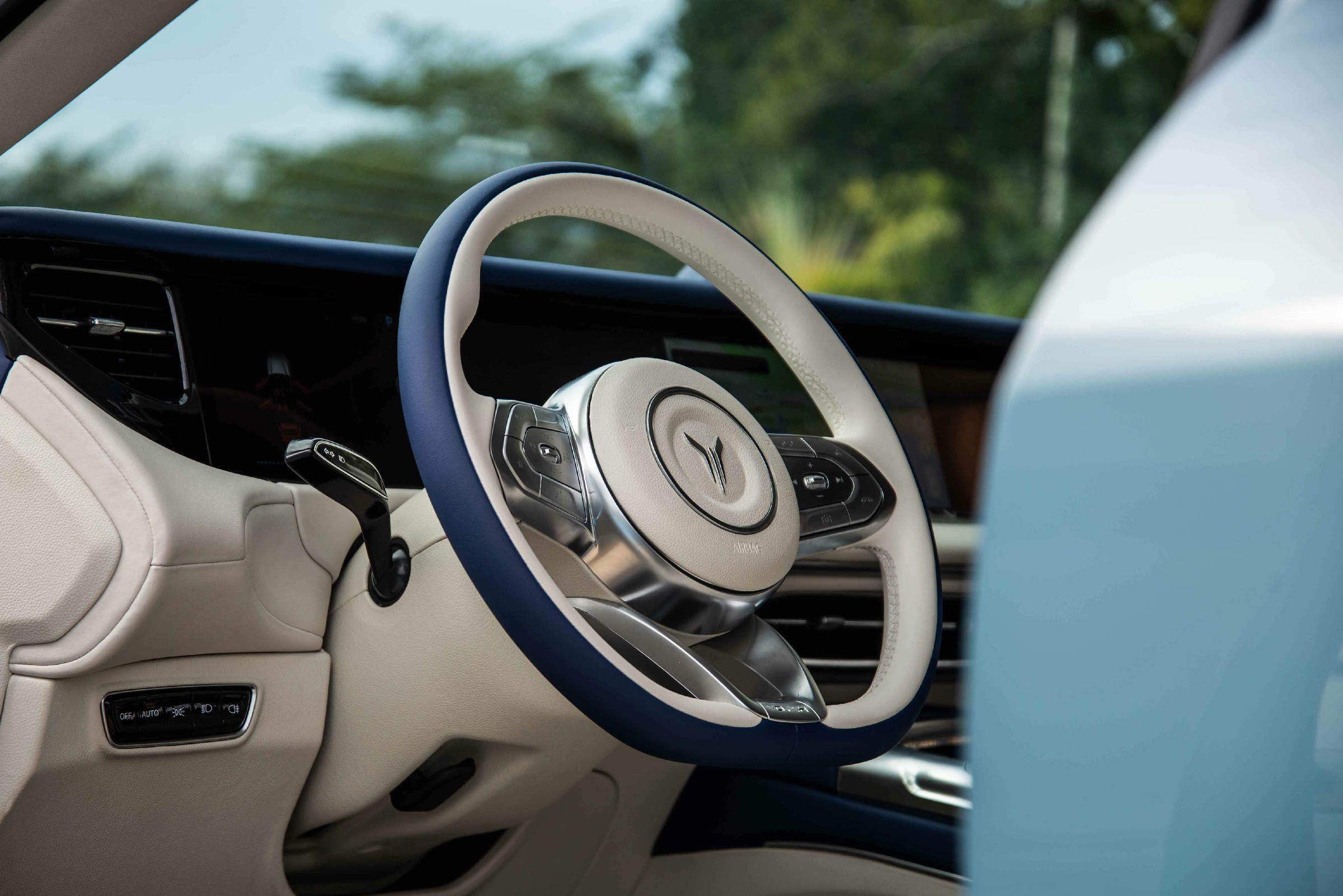
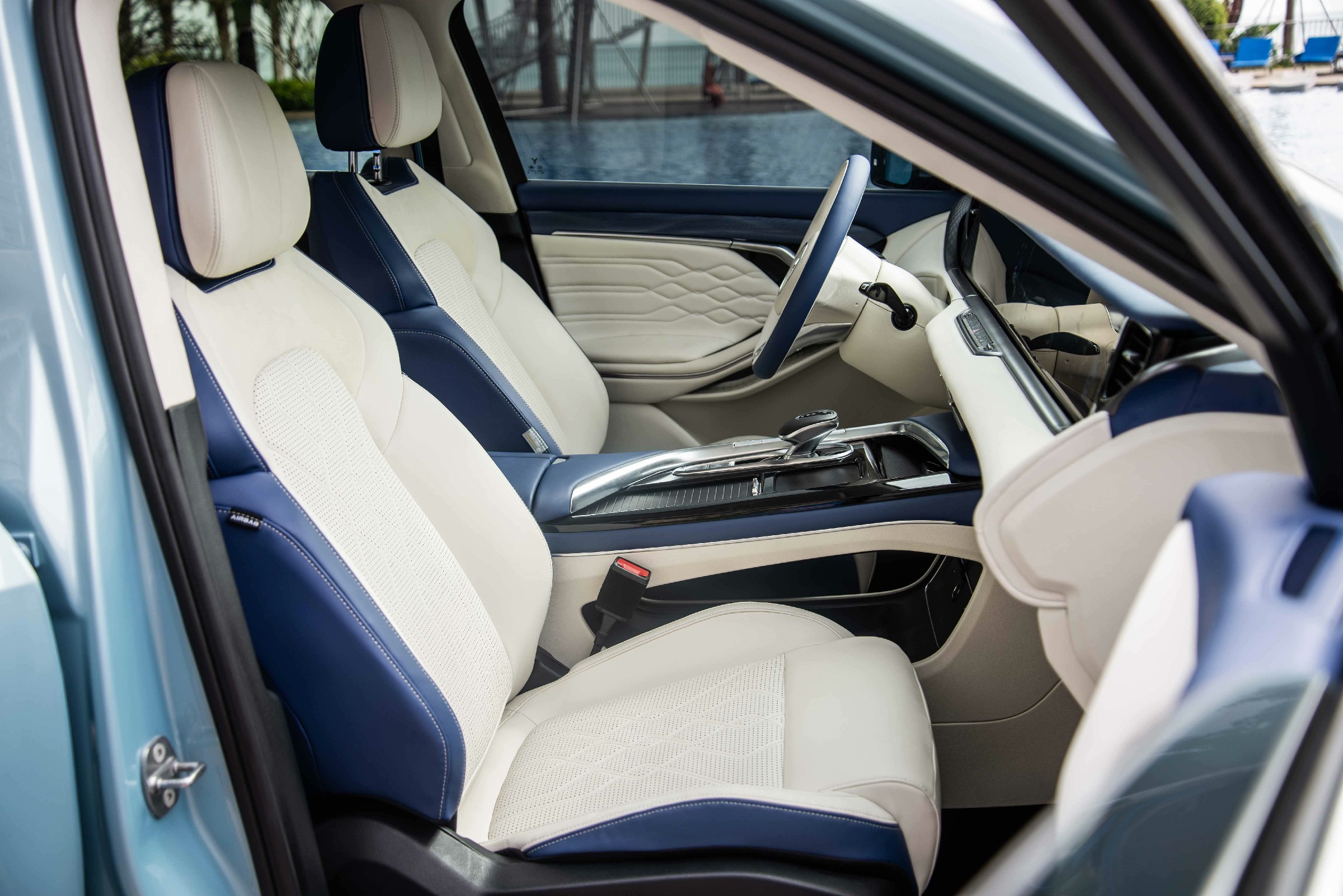
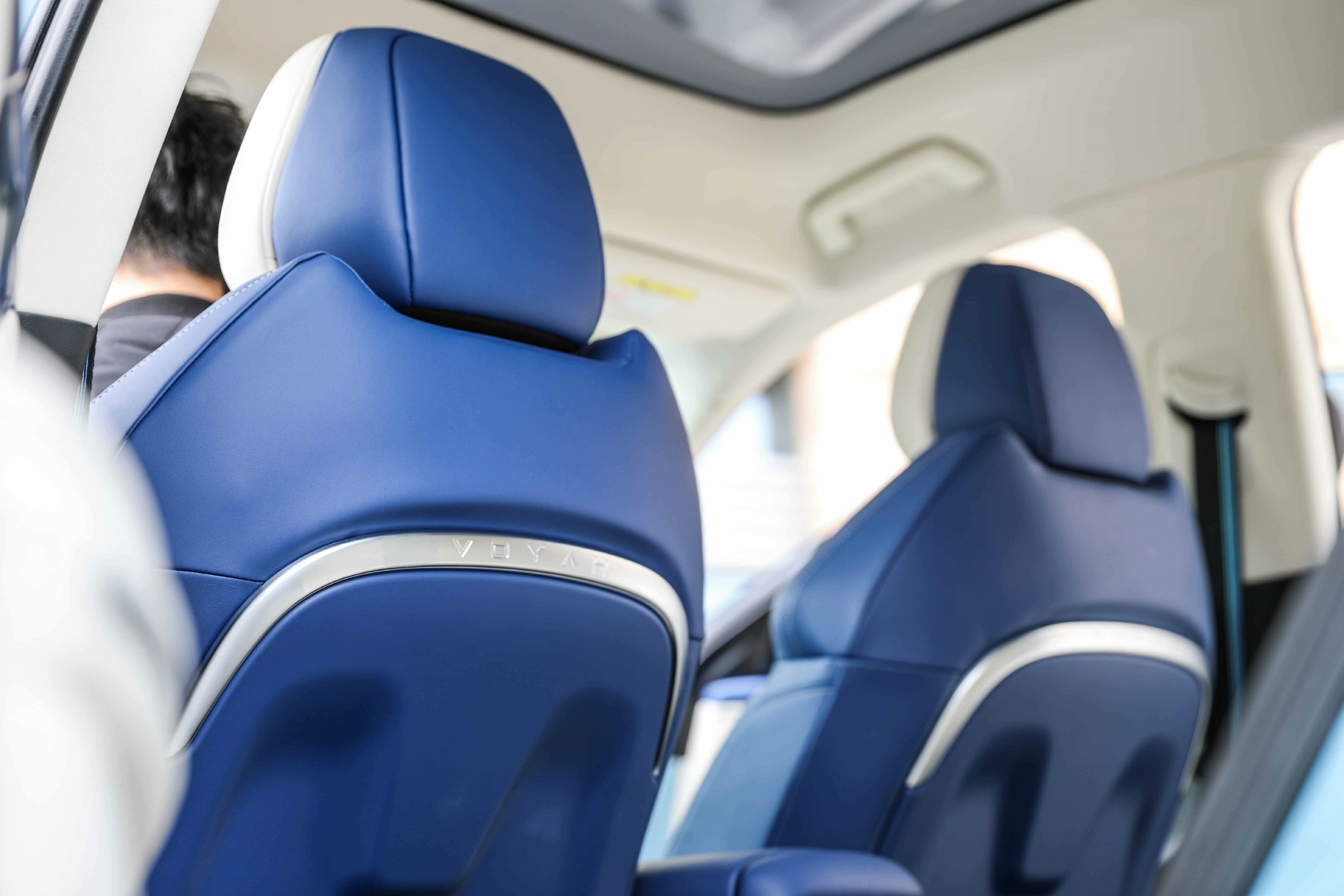 I’m glad to see that the designer of the Voyah FREE model has a good taste and has avoided using some garish color schemes to create differentiation. Similar color combinations have appeared before on the Mercedes-Benz E-Class, and have been given a very appropriate name: “Yacht Blue”.
I’m glad to see that the designer of the Voyah FREE model has a good taste and has avoided using some garish color schemes to create differentiation. Similar color combinations have appeared before on the Mercedes-Benz E-Class, and have been given a very appropriate name: “Yacht Blue”.
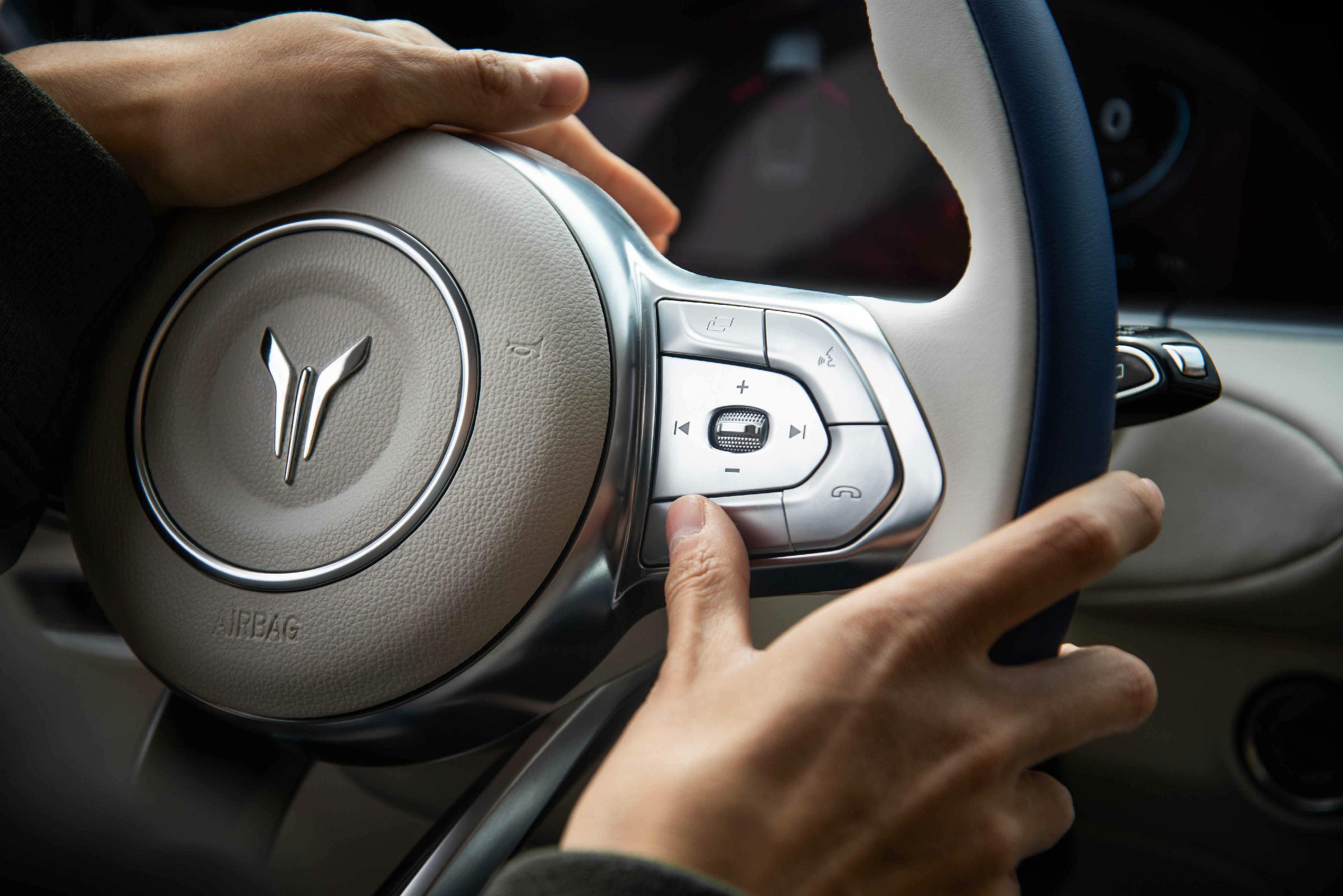
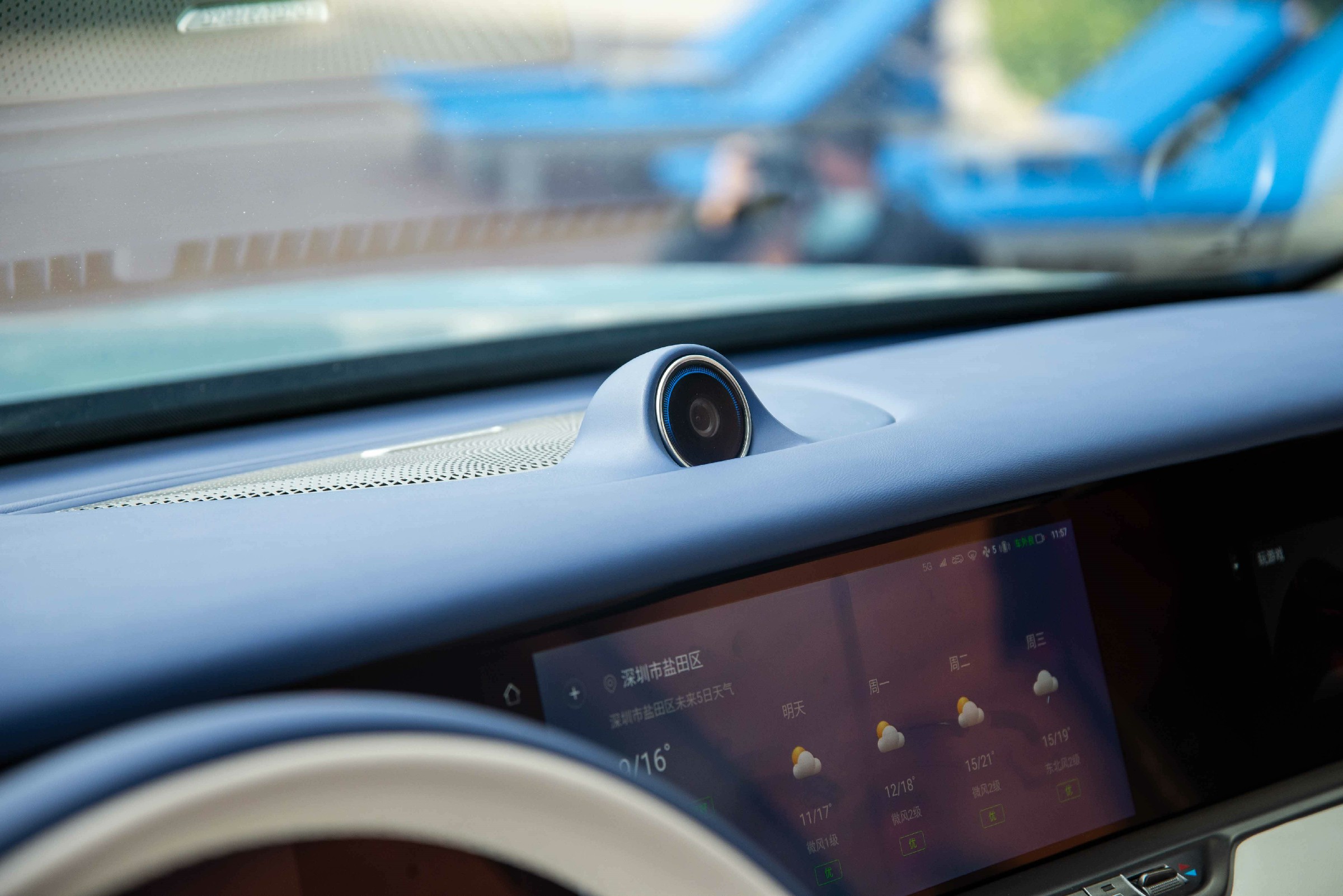
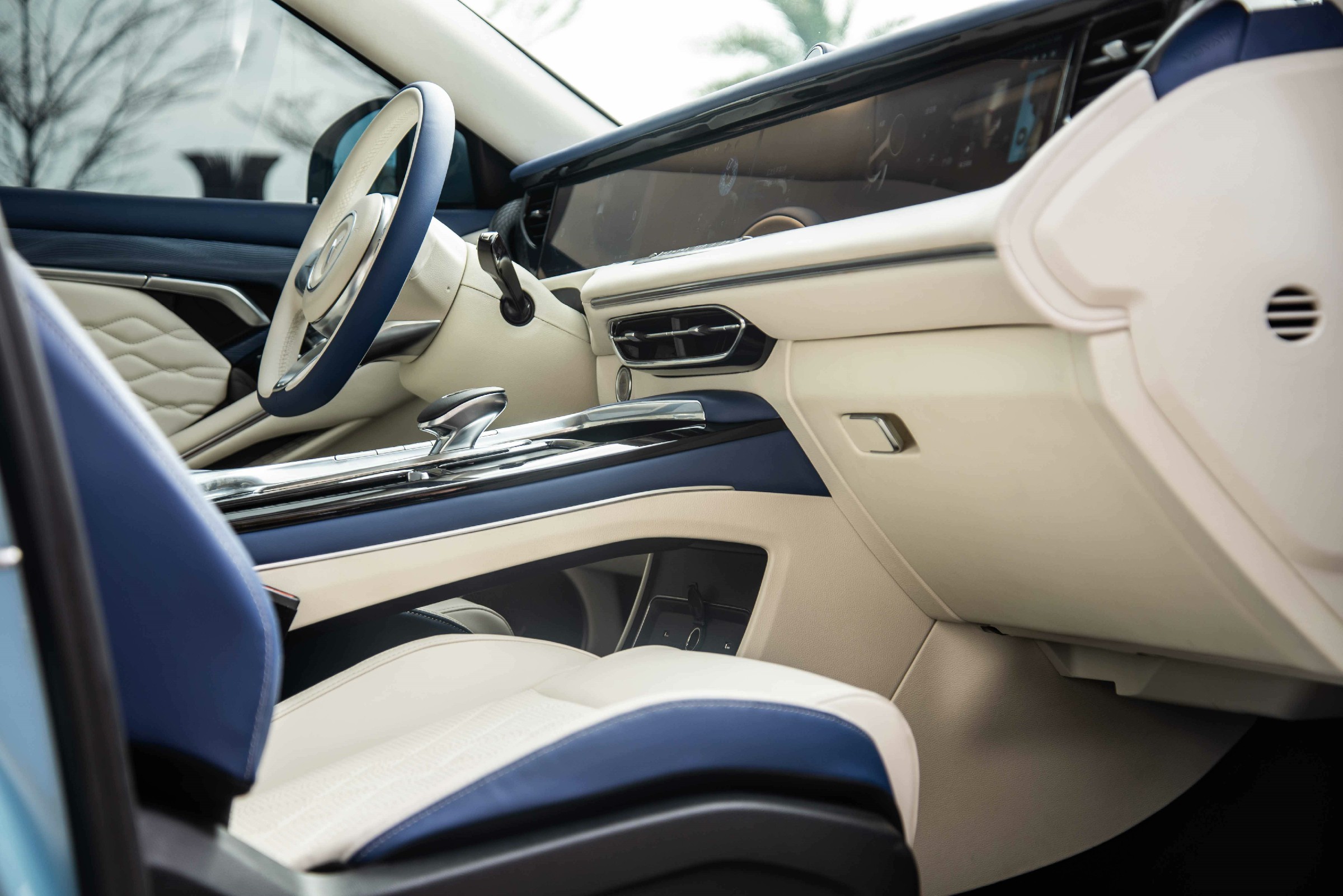
I think paying attention to color is a useful but often overlooked aspect of the automotive industry. In my opinion, the more luxurious the brand, the more you will see this kind of effort to avoid monotony in the design, and it also creates a sense of ceremony.
But interior color matching is just one aspect of the Voyah FREE’s ceremonial design. When you open the door, the seats with comfortable entry and exit function will automatically move back, and at the same time, the air suspension will also begin to lower, giving you a more dignified feeling when getting in the car.
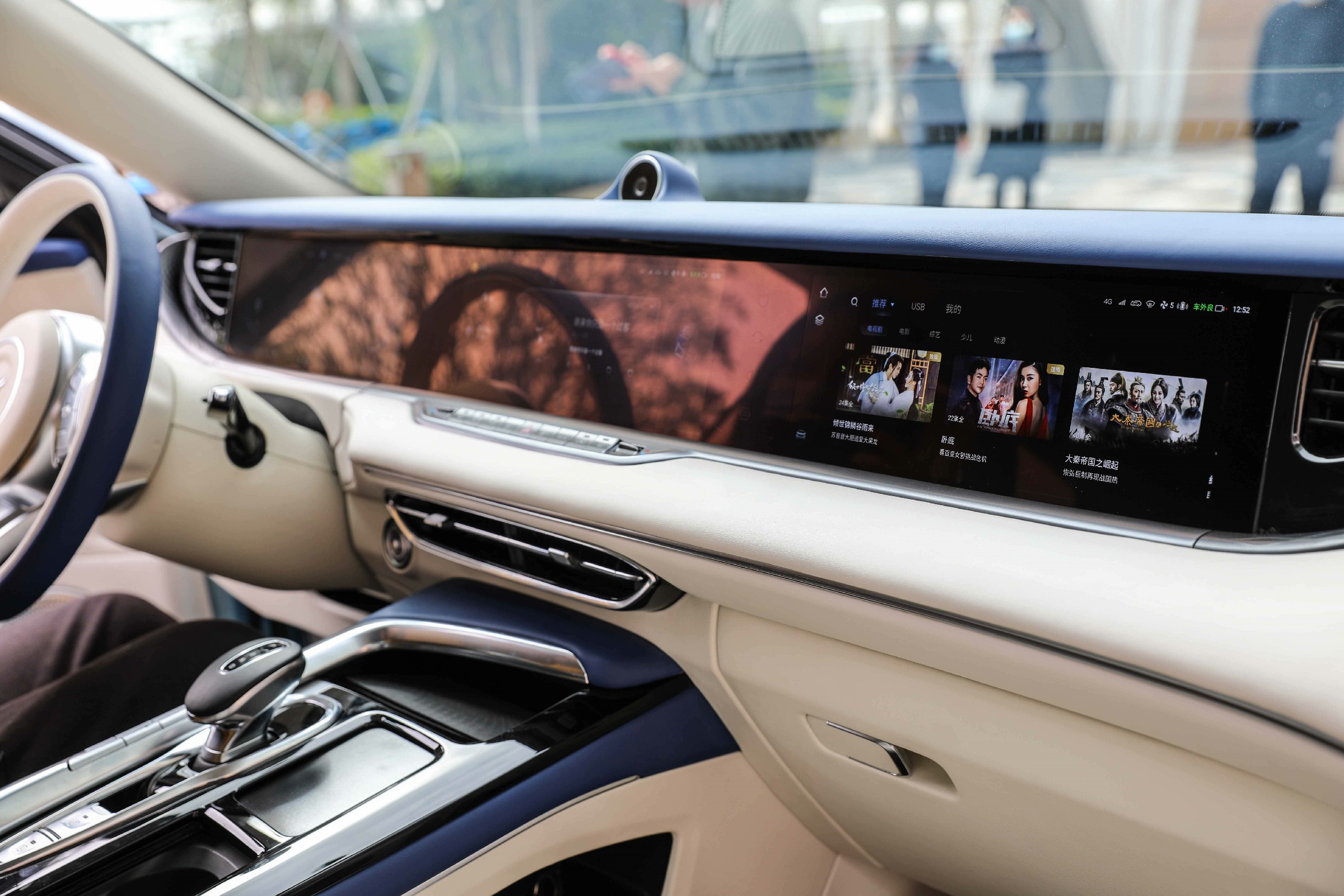
Once you’re inside, you’ll see the integrated three-screen central control console in front of you. This integrated console can be electrically raised and lowered with buttons, and when it is lowered, the front view is improved by about 4 cm. The system also has two sets of UI for the raised and lowered states.
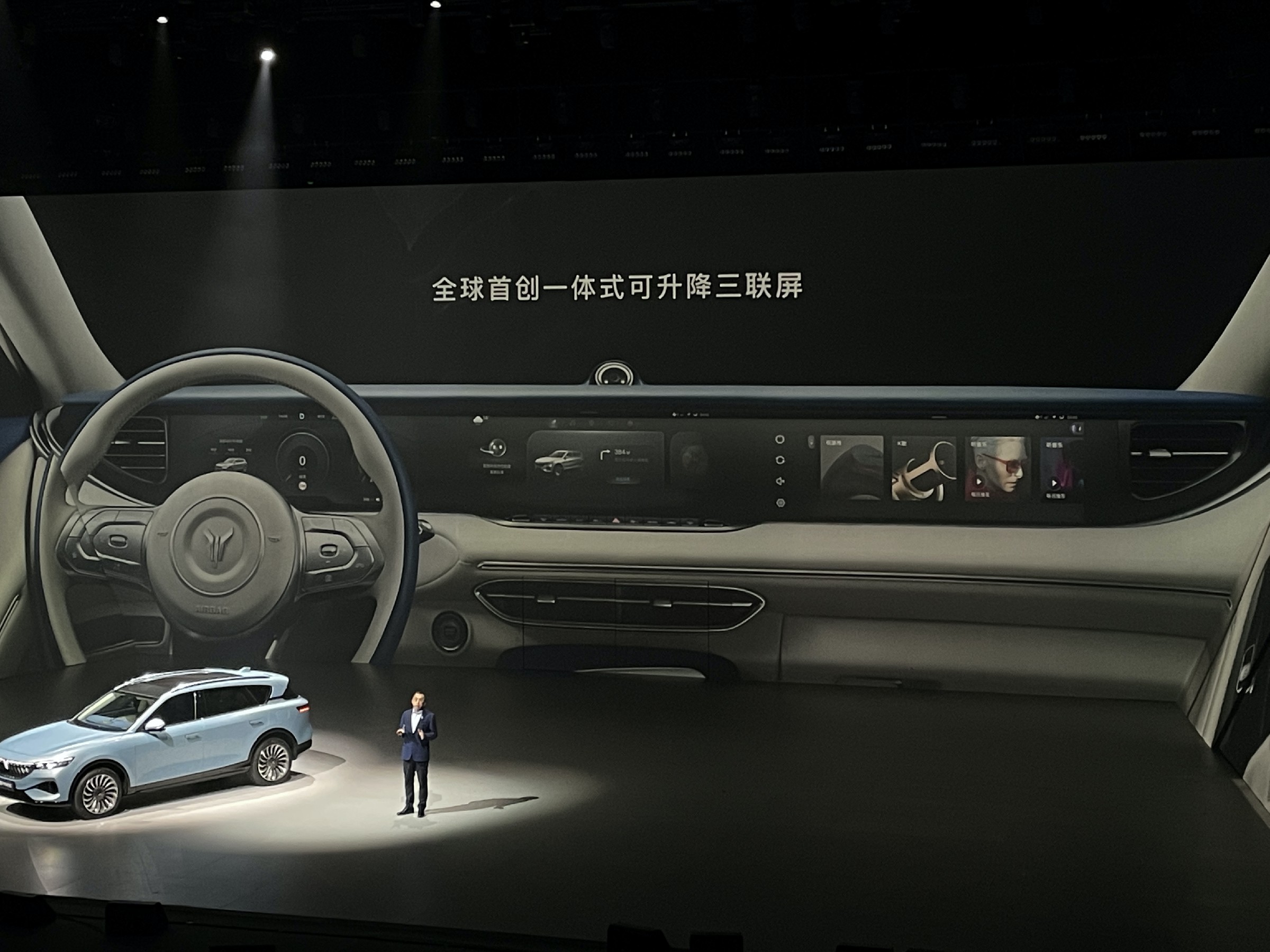
During the Voyah launch event, this feature was introduced in detail. To achieve this lifting and lowering function, the central control console used a magnesium-aluminum alloy lift mechanism. During the research and development phase, Voyah evaluated and verified 16 different schemes with suppliers, and finally we see the finished product that can reliably operate for more than 30,000 times.
This design is very innovative, but I feel that the gimmick is a bit too much. There is not much difference in the interaction inside the vehicle cabin in the two states, mainly a sense of ceremony and luxury. Considering the complexity of this mechanism and the cost, I personally think it may be a bit excessive.From another perspective, creating luxurious cars does require some gimmicks. If you tell a Panamera owner that their active rear wing is useless, or a Rolls-Royce owner that their retractable Spirit of Ecstasy ornament is useless, they will simply shrug. Ceremony is a part of luxury, and for some consumers, spending money is sometimes just about showing off.
However, there are also some practical elements of ceremony on the ARCFOX Alpha S, such as the comfort of getting in and out of the car with the synchronized movement of the seats and air suspension mentioned earlier, and the “sci-fi technology” features inside the car, such as the variable-tint glass.
The panoramic sunroof on the ARCFOX Alpha S adopts the very popular giant glass design that we have seen on cars such as the Model 3 and EC6. This design gives the car an open and bright feel, but one problem with it is that it can get hot inside the car during periods of strong sunlight in summer, and it can be a bit too transparent for someone who wants to sleep in the car.
The ARCFOX Alpha S solves this problem with its variable transparency glass sunroof. The dashboard allows for 10 levels of adjustability of the glass, from completely opaque to completely clear. Some media outlets have compared this design to the windows found on the Boeing 787, but the glass on the 787 can change not only its translucency, but also its color. Nonetheless, the variable transparency glass on the ARCFOX Alpha S is still a great feature, and I think it’s the closest thing to this type of technology that we currently have on a car on the market.
Now let me conclude my thoughts on the ARCFOX Alpha S. After spending several hours with the car, I find it to be quite unique. It has its own kind of novelty, but it doesn’t feel like a typical new-age electric car. Instead, ARCFOX Alpha S has a very perceptible, traditional luxury feel, but without being too old-fashioned or boring.
So who is its competition, you might ask? I know you want to say, “the NIO ES8”. While it may seem at first glance that these two cars have a lot in common – both are mid-sized SUVs, both have a range-extended electric powertrain, and both have a similar price range – the truth is that they have many differences as well.Ideal ONE uses a 1.2T 3-cylinder engine with a powertrain of 240 kW dual motors. The Voyah FREE, on the other hand, employs a 1.5T 4-cylinder engine with an additional 500 kW dual motor combination. Despite both being mid-to-large-sized vehicles, the Ideal ONE is a 3-row 6-seater, while the Voyah is a 2-row 5-seater, creating a certain divergence of audience.
To ensure range and energy efficiency, Ideal opted not to utilize high-power range extenders and motors, positioning the midpoint of the powertrain as further forward in the vehicle’s front compartment as possible, resulting in the ample space for a 3-row 6-seat design. Ideal prioritizes even use of space throughout the car interior, while the Voyah FREE is a typical “spend-thrift” embodying a more upscale and ritzy feel. With only two rows to contend with at a 2955mm wheelbase, the Voyah employs a larger range extender upfront, coupled with double-wishbone air suspension and more powerful motors, aiming for stronger power and a more advanced driving experience.
However, power and energy efficiency are not easy to reconcile – the Voyah FREE’s more fierce and abundant power is expected to bring higher energy consumption, and the official fuel consumption data has not yet been released. However, pre-existing information revealed that the Voyah FREE hybrid version has a pure electric range of 140 km.
Therefore, the Ideal ONE has a product style that places a strong emphasis on balance and all-around capabilities, avoiding sacrificing in one area for the sake of another. Overall, it’s a versatile family vehicle. The Voyah FREE, in contrast, is a more luxury car that stresses its own sense of ceremony and atmosphere, with numerous designs created for aesthetic impact and personalization. It is less focused on comprehensiveness and pragmatism, and more intent on fully realizing its image and appeal.
Thus, in my view, these two cars are more like fellow travelers with individual competencies compared to direct competitors.
Lastly, during the launch event, the Voyah manufacturer officially stated that the sales price for the Voyah FREE’s pure electric and hybrid versions will not exceed 400,000 RMB, with specific pricing to be revealed around the time of the Shanghai Auto Show in 2021. The vehicles will start delivery in the third quarter of 2021. The official has already begun booking and pre-ordering.
Recalling Voyah’s CEO and CTO Lu Fang’s repeated reference to “zero anxiety” during the event and Voyah’s definition of the term – resolving users’ anxieties in six dimensions including quality, safety, range, services, sustainable development of the brand, and brand delivery. In my opinion, backed by Dongfeng Motor Group, Voyah can handle the first two issues, and range anxiety with its hybrid electric systems. However, the remaining three problems will still represent unknowns and challenges for the newly-established Voyah, or for the venerable Dongfeng Group.
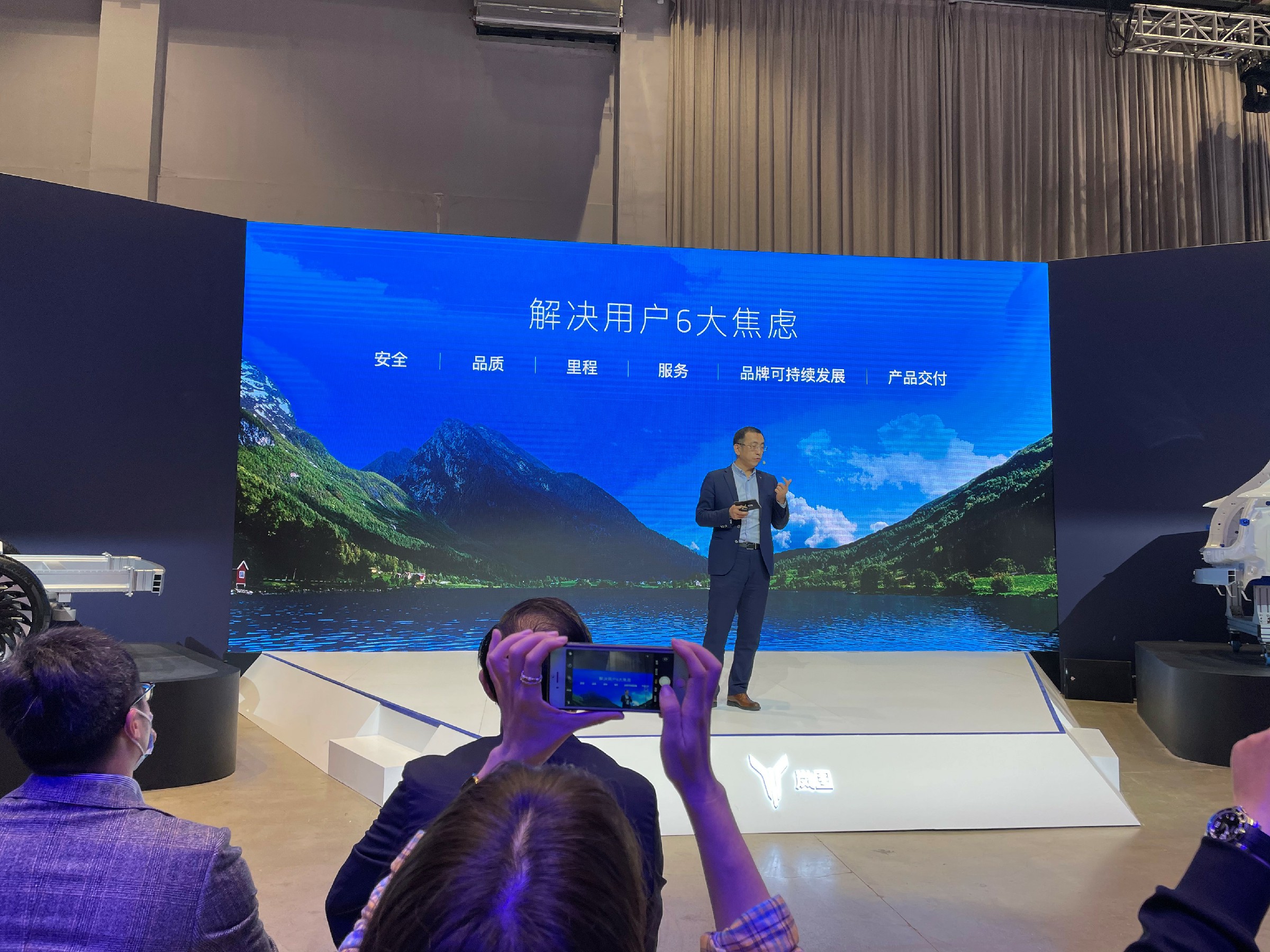 Lu Fang has repeatedly stated that the employees at Voyah come from all walks of life. It can be felt from their words that the company is making efforts towards diversity and a younger mindset. This can also be seen from their press conferences and website style. Although Voyah is not very “traditional”, some “traditional” elements can still be seen.
Lu Fang has repeatedly stated that the employees at Voyah come from all walks of life. It can be felt from their words that the company is making efforts towards diversity and a younger mindset. This can also be seen from their press conferences and website style. Although Voyah is not very “traditional”, some “traditional” elements can still be seen.
The so-called “the hardest revolution in the world is to revolutionize oneself”. It is already difficult to change a habit, let alone for those established “old-school” car companies to lower their posture and learn user operation as well as electric vehicles from new forces. As consumers, it is often difficult for us to separate these companies’ products from the label of “traditional car companies” in our minds. Therefore, in my opinion, traditional companies that truly take action are worthy of respect.
Before the static experience ended, I raised a few areas that I personally felt needed improvement to the engineers on site, including the loud sound of the central control lifting mechanism and the consideration of eliminating the starting button. They did not provide any excuses or refute me but immediately took photos and notes, and told me with seriousness and calmness that they had recorded these contents and would discuss them further.
At the moment when I truly felt this atmosphere, whether Voyah is a central enterprise or a new force in my opinion no longer matters. Because no matter what label people put on it, actual action will be more convincing.
This article is a translation by ChatGPT of a Chinese report from 42HOW. If you have any questions about it, please email bd@42how.com.
